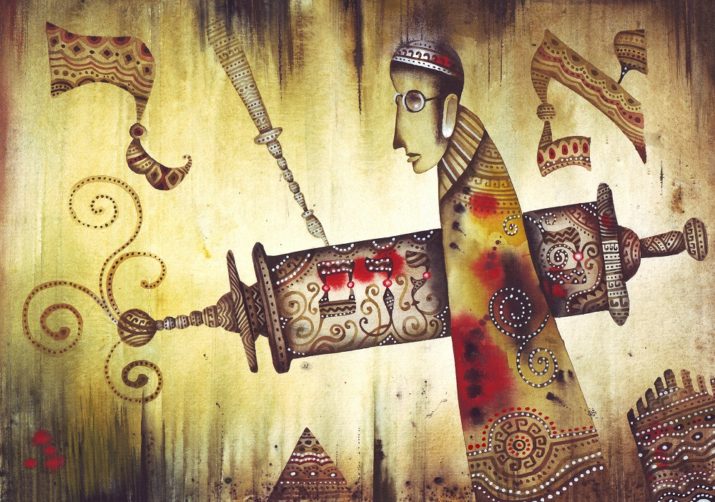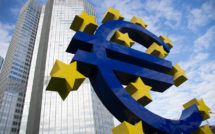

This is part of our special feature on The Crisis of European Integration.
“Worse than/ hate which/ can offend: friendship/against which/ I cannot/ defend”: in this short poem entitled “Philosemite” and published in 1967, the Dutch Holocaust survivor Saul van Messel (the pseudonym used by historian Jaap Meijer) did not mince words against expressions of supposed sympathy towards Jews, which in the Netherlands of the 1950s and 1960s predominantly originated from the ranks of the Reformed clergy.[i] Doubting the motivations, authenticity or even the necessity of “philosemitism” was however not a new phenomenon among Jewish intellectuals in post-Holocaust Western Europe. In “Sartre, Portrait of a Philosemite” published in 1947 in Esprit, the French jurist and philosopher Wladimir Rabi offered cautious support for the views defended by the existentialist thinker in his famous Réflexions sur la question juive (1946), the most resounding “philosemite” manifesto of the postwar years. In this radical reformulation of the “Jewish question,” Sartre uniquely examined the Jewish condition from the point of view of the aggressor, the (French) anti-Semite and his distorted projections of fears and inadequacies on the figure of the Jew. Yet Rabi, and with him a long list of critical readers of Réflexions, ultimately felt unease with Sartre’s empathy: “Here we are under the microscope, ‘objects’ of Sartre’s generosity, yet ‘objects’ all the same.”[ii] In Being Jewish (1947), Emmanuel Levinas similarly praised Sartre’s path-breaking intervention but regretted that his exclusive concern with the antisemite’s gaze “creating the Jew” ignored the “facticity” of a Jewish existence not simply determined by antisemitism.
Despite their reservations, however, Levinas, Rabi and Meijer (a representative sample of Jewish writers who both embraced and challenged this newfound “love”) acknowledged the rise of a “philosemitic” discourse after the war, paradoxically at a time when mainstream “Holocaust consciousness” still remained a fairly distant prospect. “What is truly awful about the destruction of the Jews,” wrote the late Tony Judt, “is not that it mattered so much but that it mattered so little.” Although historians have now nuanced this diagnosis of indifference, Judt’s remark reminds us of the overall invisibility of the Holocaust, conceived as a singular Jewish experience, in postwar European societies until the late 1970s. This occultation, however, took place while multiple forms of philosophical, theological and political “philosemitism” – the unsatisfactory term connoting support for Jews or identification with them – entered, with various degrees of intensity, the realm of public discourse in France, the Low Countries, Italy and England after 1945. In West Germany, where foreign visitors during the Adenauer era witnessed a strange “philosemitic fashion,” positive pronouncements on Jews by politicians contrasted with the silence – if not antagonism – on Jewish victims among a German public still “unable to mourn.” Manifestations of “philosemitism” in the early Federal Republic functioned primarily as a “whitewashing” device designed to secure Germany’s acceptance in the West while erasing wartime guilt and accountability.[iii] Yet coded or not, iterations of “philosemitism” are part and parcel of the history of Western Europe from 1945 to 1989, and even more so, of the European Union since its inception. And while “philosemitism” never hindered the persistence or renewal of antisemitism – as Samuel Moyn showed in a study of early Holocaust memory in France, philosemitism could also closely flirt with the taboo of antisemitism[iv] – the positive reevaluation of Jewishness in Western Europe since 1945 marks a profound caesura in the course of both Jewish and European history.
Yet if books on “old” and “new” forms of antisemitism abound, there is to this day no interpretative account of European “philosemitism” in the postwar era, a phenomenon significantly distinct from its North American counterpart. To be sure, a vast and still growing literature has explored the process of “coming to terms with the past” in each European country occupied by Nazi Germany during the war. It is indeed under the prism of Holocaust repression, guilt and at a later phase, atonement, that evolution in European attitudes towards Jews or the Jewish question is traditionally measured. “Guilt and complicity,” wrote in 1968 a British Jewish observer skeptical of a “French vogue for Jewish subjects,” formed “the shaky foundations on which that ill-famed phenomenon, philo-Semitism, rests.”[v] Since the 1970s, the rise to prominence of Holocaust-centric memories of the Second World War certainly contributed to a “philosemitic” turn in West European public discourse, at the risk of creating an “imaginary Jew” devoid of any historicity other than that of Auschwitz. But the trajectory of “philosemitic” Europe after 1945 does not systematically replicate the evolution of Holocaust memory and its belated explosion in the later part of the twentieth century. To the dismay of his most recent readers, Sartre’s provocative “anti-antisemitic” Réflexions did not make any mention of the Final Solution or the collaborationist Vichy regime – a silence which did not torment an earlier generation of Sartre’s commentators. The denunciation of antisemitism was also the main motivation behind Catholic doctrinal revisions. Nostra Aetate (“In Our Time”), the declaration promulgated in 1965 at the end of the Second Vatican Council, exonerated Jews from the killing of Christ and decried “displays of antisemitism… at any time and by anyone” but carefully avoided the path of Holocaust introspection, despite the important role played in this evolution by Central European Jewish converts personally affected by the genocide.[vi] In postwar Western Europe until the late 1960s, Christian, existentialist or humanist “philosemitism” did not engage with the question of Holocaust accountability: identification with Jewish suffering, including homages to Jewish martyrdom such as François Mauriac’s moving foreword to the first edition of Elie Wiesel’s Night (1958), did not seek to confront the past. By famously comparing the young Auschwitz survivor to “Lazarus rising from the dead” and then to Jesus himself, Mauriac’s “philosemitism” offered a Christological view of the Holocaust. Overwhelmed by Wiesel’s “angelic sadness,” Mauriac could only “embrace him and weep.” Ultimately, however, Mauriac’s Wiesel perfectly embodied “the connection between the cross and human suffering.” While Auschwitz was Wiesel’s “stumbling block for his faith” (a reference to Wiesel’s rejection of God in Night), it became, to the contrary, the “cornerstone” of Mauriac’s own Catholic faith.
Mauriac’s “philosemitism,” like “philosemitism” itself, is thus best understood not just as a morality tale of contrition but also as an act of legitimation “serving as evidence for the truth of non-Jewish beliefs.”[vii] Writing the history of European “philosemitism” after 1945, therefore, does not merely amount to collecting favorable pronouncements on Jews, Jewishness, Judaism or the state of Israel. It also requires the deciphering and contextualization of this discourse across decades and geographies. Like anti-Semitism, “philosemitism” is indeed inscribed in specific national or religious cultures. Expressions of British tolerance or admiration for Jews from Cromwell to Churchill, for instance, drew from the vocabulary of early modern Christian polemic and Victorian morals. In post-revolutionary France, however, the positive figure of the Jew was a touchstone of French Republican universalism. In Imperial Germany, where the word “philosemitism” was first coined, it meant above all the defense of Jews against the rising popularity of antisemitism.[viii] These national differences were not entirely erased in the post-Holocaust period but the language of “philosemitism” Europeanized itself in the postwar decades, culminating with the identification of “Europe” with Jewish cosmopolitanism and the moral legacies of the Shoah in polite declarations by European Union officials; or more recently, in the rhetoric of populist or far-right movements for whom Jews suddenly became the symbols of “European” values undermined by Islam.
The point of departure of “philosemitic” Europe, however, remains the end of the Second World War and the return of a dramatically small number of Jewish survivors to their country of origin. Jewish returnees from concentration camps were generally met with public indifference in French, Dutch, Belgian and Italian societies where the singularity of Jewish suffering did not easily find a space of expression. Amidst this silence, however, the appearance of a new humanitarian sentimentality is traceable in multiple reactions to the plight of Jewish refugees and survivors in occupied Germany or in “illegal” transit to Palestine, in France and Italy in particular. In these two countries, Jewish statelessness between 1945 and 1948 served as a potent human rights trope much before prisoners of conscience and dissidents became galvanizing emblems of human rights violations in Cold War Europe. In occupied Germany, where the temporary but haunting presence of Holocaust survivors and displaced persons stirred up unease and antagonism, public figures did not voice empathy. But another type of Jewish refugee, the intellectual hounded out by Nazism and now returning permanently or temporarily from exile, shaped the “philosemitic” sensitivities of an emerging cohort of German thinkers and writers, including the young and promising members of the literary association known as “Gruppe 47.”As Jürgen Habermas recently recalled, his generation learned from Jewish emigrants “how to distinguish the traditions that are worthy of being continued from a corrupt intellectual heritage.”
The 1950s also witnessed the blossoming rhetoric of Judeo-Christian “morality,” “tradition,” and “civilization” in the writings of Catholic and Protestant clergymen and theologians after the war. The archives of the World Council of Churches (Geneva) offer in this regard a unique window into the European singularities of the Judeo-Christian movement. Although advocated, as in the United States, as a sacred union against Nazi and Communist “paganism,” Judeo-Christianity was not merely a weapon in the cultural Cold War. It also inaugurated a new partnership between Christians and the People of the Book based on equality and spiritual affinities. Yet Jewishness also took a positive function in secular postwar thought. Jews occupied indeed a particular place in humanist philosophy, particularly so in France in the decade following the Liberation. The writings of Albert Camus, Jacques Maritain and Jean Paul Sartre are indicative of their paradigmatic place in this moral framework. In several essays, Camus depicts Holocaust survivors as the epitome of powerlessness. Yet the Jewish prism served another purpose in Camus’s reaction to the Algerian war. Longing for a Mediterranean identity at equidistance between French colonialism and Algerian independence, Camus extolled North African Jewishness as a native bridge between European settlers and Arabs. The Catholic theologian Jacques Maritain, for his part, sought to restore the original kinship between Christians and Jews by integrating Judaism into his doctrine of “integral humanism” and the dignity of the human person. This radical shift in Christian-Jewish relations, he argued, amounted to no less than a “reorientation of history.” As Jonathan Judaken has shown, Jean-Paul Sartre used the image of the Jew very differently: as a conduit to political resistance, Existentialist Marxism, and the redefinition of the role of the intellectual in the postwar era.[ix] In Western Europe as in the United States, bias and enmity did not magically disappear to make room for Judeophilia. But the post-1945 discourse of dignity, human rights, inter-subjectivity and emancipation became increasingly infused with Jewish frames of references.
The relationship between the European non-communist Left and Zionism between 1948 and 1967 offers another insight into the history of postwar “philosemitism.” As revealed in the impressions recorded by politicians, intellectuals and trade unionists touring Israel from 1948 to the mid-1960s, the new Israeli Jew fascinated European socialists and left-of-center Christian Democrats. In their eyes, the Jewish state represented the fulfillment of socialism, self-determination and historical agency. The writings and personal papers of François Mitterand, Willy Brandt, Olof Palme, Harold Wilson as well as the archives of the Socialist International amply reveal the appeal of Israel as an oasis of utopian socialism and an inspiring model for the welfarist reconstruction of war-torn nations. Even future radical left-wing theorists such as the Italian “autonomist” Marxist Toni Negri, who spent time in a kibbutz in 1954, fell under the spell of the new state. “Israel was my luck, my chance and my symbol”, the anti-Zionist Negri nonetheless reminisced from prison in 1981.[x] During the 1950s and in the midst of decolonization, Europe’s first social-democratic moment neatly meshed, culturally and politically, with socialist Zionism. For non-communist progressives until the June 1967 war, “philosemitism”, even in its minimal form of “anti-antisemitism”, entailed a strong identification with Israeli Jews. Writing on the eve of the war, Sartre offered a candid explanation for this phenomenon:
For many of us, there is (…) an affective dimension which is not the passing effect of our subjectivity but rather the result of historical and perfectly objective circumstances that we cannot soon forget. Thus we are allergic to anything that could in the least resemble anti-semitism. To which many Arabs would respond: “We are not anti-Semitic but anti-Israeli.” Doubtless they would be right, but can they change the fact that for us, the Israelis are also Jews?[xi]
The 1968 student revolts, however, changed that. Although Parisian demonstrators defiantly claimed the identity of “German Jews” in support of their arrested leader Daniel Cohn-Bendit, the protest movements in France and Germany (much different from each other in their appropriation and rejection of Holocaust memory) marked the end of the foundational period of European “philosemitism.” The humanist identification with Jewishness lost much of its appeal as humanism itself fell in intellectual disrepute. The anti-imperialist New Left, for its part, grew disillusioned with Zionism in the wake of the 1967 June War. Yet the 1968 counter-culture did not bring the clock of European “philosemitism” back to 1945. In fact, it stimulated new forms of empathy. Thanks to humanitarian activists stemming from the 1968 movement, the Holocaust became in the 1970s the archetypal metanarrative of trauma in the north Atlantic world. Undeniably, the explosion of human rights and militant humanitarianism in the 1970s coincided with a new brand of “therapeutic” philosemitism informed by Holocaust memories. This shift is detectable, for instance, in the language of Amnesty International campaigns: completely absent in its first decade of existence (1961-1971), references to the Holocaust started then to justify Amnesty’s activism in favor of victims of torture. Similarly, invocations of the Holocaust were prominent in the language and ideology embraced by the founding generation of Doctors without Borders.
The impact of the radical sixties on European “philosemitism” is not however limited to new perceptions of traumatic victimhood among humanitarians and human rights activists. In Germany, the personal trajectory of the Green politician Joshka Fischer, who in the early 1980s abruptly turned against the violent anti-zionism and antisemitism of some of his former revolutionary comrades in favor of a foundational politics of Holocaust accountability, shows that if seen through a longer periodization, “1968” did much to enshrine “philosemitism” as a marker of European identity. Heirs of the 1968 Prague Spring also played an important part in the elevation of Jews as symbols of European culture. Upon receiving the Jerusalem Prize in 1985 – at a time when the idea of Central Europe was being rediscovered in the West –Milan Kundera not only praised Jews for “keeping faith in European cosmopolitanism” despite the horrors of the Holocaust. He also viewed Israel itself “as the true heart of Europe, a peculiar heart located outside the body.” The image of “Israel as Europe” or that of Israeli Jews unveiling the true nature of European identity remained an important metaphor after the end of the Cold War. “Having thus departed from Europe,” wrote the French political theorist Pierre Manent in 2006, “the Jewish people invite Europe to utter its own name. They ask Europe its name.”[xii]
Since the fall of the Berlin Wall and German reunification, “philosemitism” has migrated closer to the mainstream of European societies, even in some cases in post-communist countries. Like antisemitism, “philosemitism” can indeed operate without Jews – the current “klezmerization” of the Jewish past in Poland, a “Jewish turn” whose possible purpose is to “reclaim the pluralistic society eradicated after World War Two”, illustrates such a possibility.[xiii] But concomitant with the rise of the “new antisemitism” in the early 2000s, a backlash against what the dissident Israeli writer Yitzhak Laor called a “new European philosemitism” complicit with the oppression of Palestinians, or the denunciation of a neo-conservative and Judeo-Christian “philosemitic reaction” only committed to the “defense of the West” tested the legitimacy accrued to “philosemitism” since 1945.[xiv] The critique of “philosemitism” by the intellectual radical left, as well as it manipulative embrace by the xenophobic far-right or islamophobic populists such as Geert Wilders demonstrate however how a marginal mode of thought in 1945 evolved into a mainstream feature, albeit hotly contested, of European culture and politics. Public expressions of solidarity with Jews are now too numerous to stand out as exceptional, even when the former French Prime Minister Manuel Valls boldly warned, in the wake of the Charlie Hebdo attacks, that “without French Jews, France will no longer be France.” Similarly, the word “philosemite” has become a profession of faith. “I am a philo-Semite,” recently declared the conservative historian Niall Ferguson in reaction to antisemitic incidents in Great Britain. From the left, the French-Spanish writer Jorge Semprun, the former communist Buchenwald inmate and anti-Francoist exile, similarly explained towards the end of his long political and literary life how he “became a philosemite.”[xv] But whereas Ferguson predictably rationalized his love for Jews by invoking a “disproportionate Jewish contribution to civilization”, Semprun, in his last public words uttered after a final visit at Buchenwald, entrusted Jewish memory with a future task, that of preserving the memory of non-Jewish political deportees and anti-Nazi resisters who like him survived “expérience concentrationnaire.” While in 1945 Holocaust survivors across continental Western Europe were subsumed within the hegemonic memory of “déportation” and national suffering, the Shoah now remarkably encapsulated all the “disappeared, the wrecked and the rescued, the Jews and the goys, men and women.” Haunted all his life by his eighteen months spent at Buchenwald, this prospect gave Semprun solace and joy, leading him to conclude his existence confident in his own “Jewish” memorialization: “Long life to the Jewish memory of our death!”
Daniel Cohen is Associate Professor of History at Rice University, Houston Texas. He is the author of In War’s Wake. Europe’s Displaced Persons in the Postwar World(Oxford UP 2012) and multiple publications on the history of refugees and humanitarianism in Twentieth Century Europe. He is currently at work on a book project entitled Second Emancipation. “Philosemitism” in Postwar Europe, 1945 to the Present. The book examines multiple forms of “philosemitic” discourse (philosophical, theological and political) in Western Europe until 1989 and the European Union since its inception.
Photo: A Man Holding A Torah Scroll. Illustration, Eugene Ivanov | Shutterstock
References:
[i] Saul van Messel, “Filosemiet” in Zeer zeker en zeker zeer. Joodse gedichten (“Very Certain and Certainly Very. Jewish Poems)”, Haagse Cahiers 10 (Rijswick Z.H: De Oude Degel, 1967). On van Messel/Meijer, see also Evelien Gans, “Philosemitism? Ambivalences Regarding Israel” in Remco Ensel et al., The Holocaust, Israel and The “Jew”(Amsterdam: Amsterdam University Press, 2016), pp. 153-154.
[ii] Wladimir Rabi, “Portrait d’un philosémite” in Esprit (October 1947), pp.532-546, here p. 537.
[iii] See for instance Frank Stern, The Whitewashing of the Yellow Badge: Antisemitism and Philosemitism in Postwar Germany (London: Heinemann, 1991).
[iv] Samuel Moyn, A Holocaust Controversy. The Treblinka Affair in Postwar France (Waltham, MA: Brandeis University Press, 2005.)
[v] Renée Winegarten, cited in Moyn, The Treblinka Affair, pp. 24-25.
[vi] John Connelly, From Enemy to Brother. The Revolution in Catholic Teachings on the Jews 1933-1965 (Cambridge, MA: Harvard University Press, 2012).
[vii] David Wertheim (ed.), The Jew as Legitimation: Jewish Gentiles Relations Beyond Antisemitism and Philosemitism (Palgrave Macmillan, 2017), p. 7.
[viii] Gertrude Himmelfarb, The People of the Book. Philosemitism in England from Cromwell to Churchill (Encounter Books: New York, NY, 2004); Maurice Samuels, The Right to Difference. French Universalism and the Jews (University of Chicago Press: Chicago, IL, 2016); Alan T. Levenson, Between Philosemitism and Antisemitism. Defenses of Jews and Judaism, 1871-1932 (Nebraska University Press: Lincoln, NB, 2004)
[ix] Jonathan Judaken, Jean-Paul Sartre and the Jewish Question. Anti-Antisemitism and the Politics of the French Intellectual (Lincoln, NB: University of Nebraska Press, 2006).
[x] Antonio Negri, Pipeline. Letters from Prison (Polity Press: Malden, MA, 2014), p. 35.
[xi] Cited in Alain Gresh, “Reflections on the Meaning of Palestine”, Journal of Palestine Studies Vol. XLI, No 1 (Autumn 2011), 67-81.
[xii] Pierre Manent, Democracy Without Nations? The Fate of Self-Government in Europe (ISI Books: Wilminton: DE, 2007), p. 68.
[xiii] Geneviève Zubrzycki , “Nationalism, “Philosemitism” and Symbolic Boundary-Making in Contemporary Poland” in Contemporary Studies in Society and History 2016;(58) 1: 66-98.
[xiv] Yitzhak Laor, The Myths of Liberal Zionism (Verso, New York, NY, 2010); Ivan Segré, La réaction philosémite ou la trahison des clercs (Nouvelles Lignes, Paris, 2009).
[xv] Niall Ferguson, “The Resurfacing of Antisemitism in Britain”, The Boston Globe, May 2, 2016, available at https://www.bostonglobe.com/opinion/editorials/2016/05/02/the-resurfacing-anti-semitism-britain/ItGJ5s9eJUnYeDIcNzxk7K/story.html ; Jorge Semprun, “Pourquoi je suis devenu philosémite”, available at http://www.lesamisdejorgesemprun.eu/crif.html and “Mon dernier voyage à Buchenwald”, Le Monde, March 3, 2010, available at http://www.lemonde.fr/idees/article/2010/03/06/mon-dernier-voyage-a-buchenwald-par-jorge-semprun_1315357_3232.html
Published on November 2, 2017




